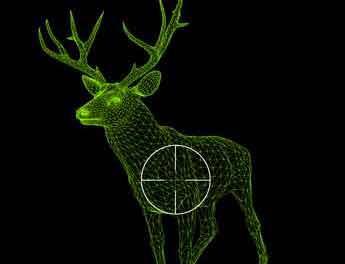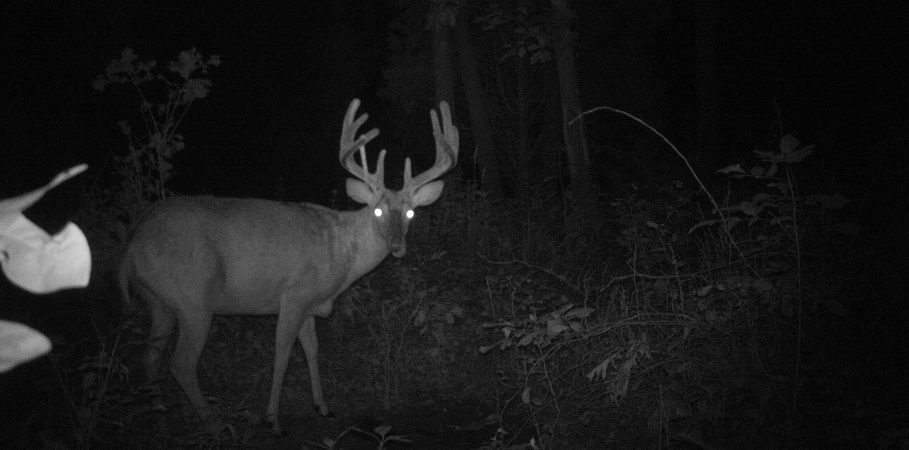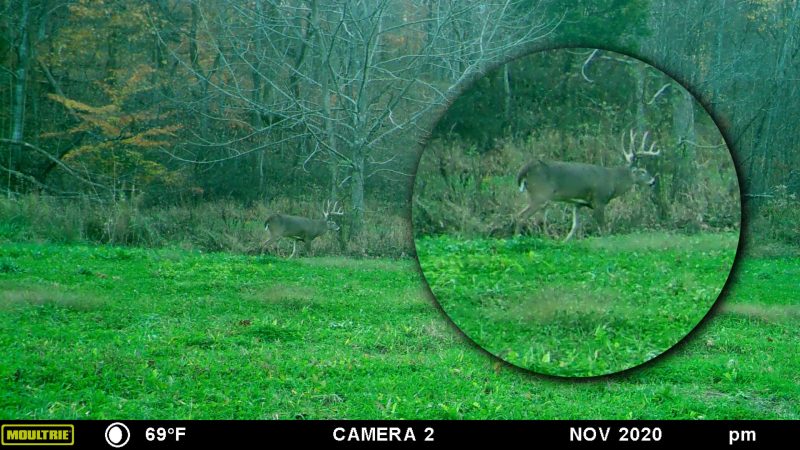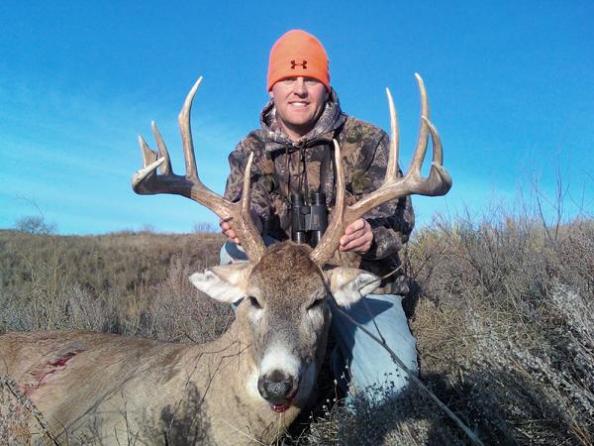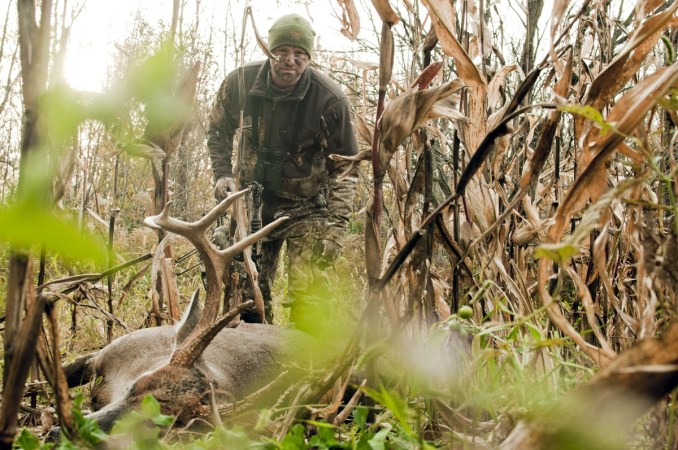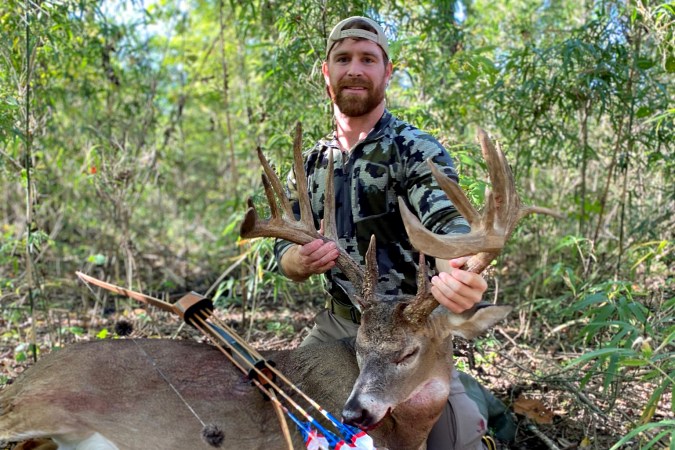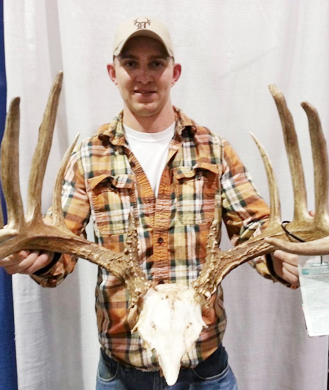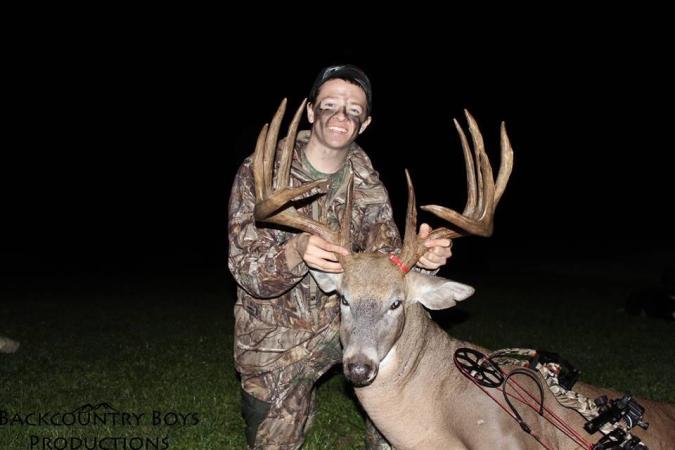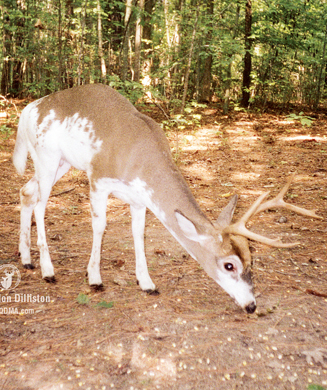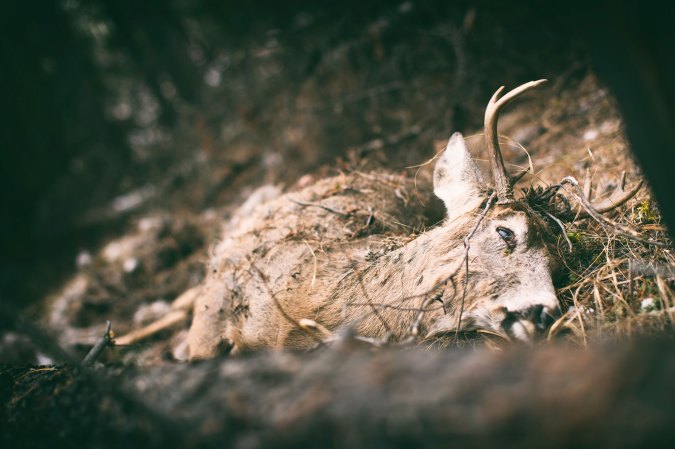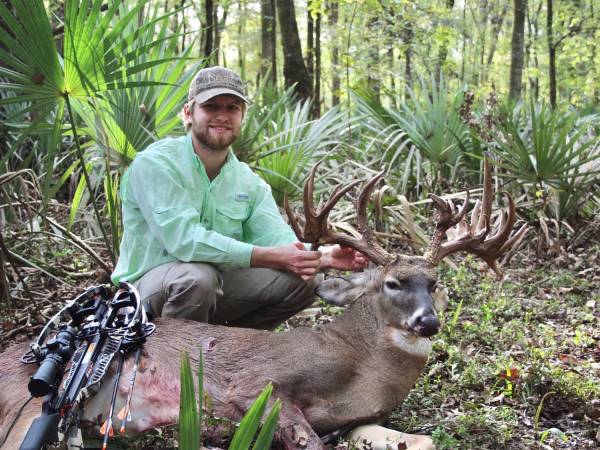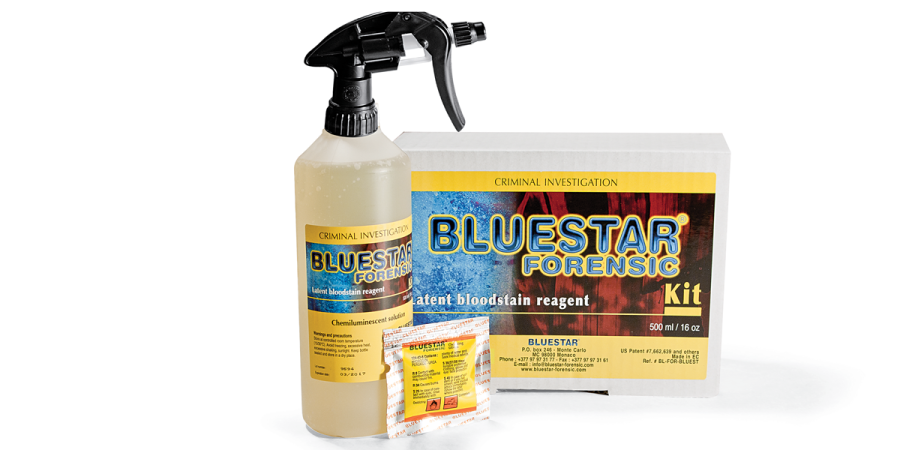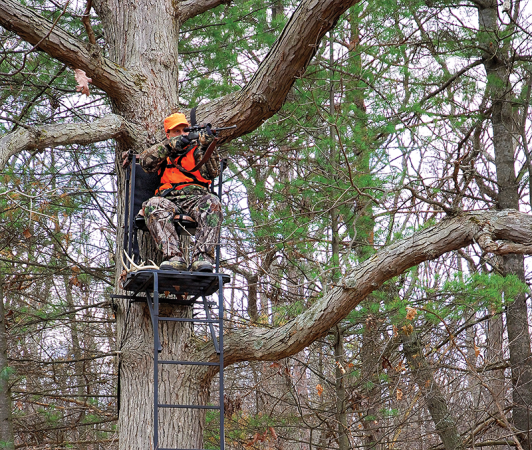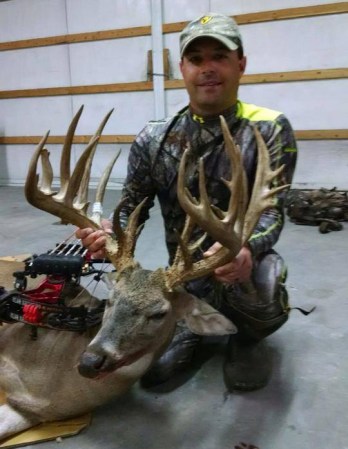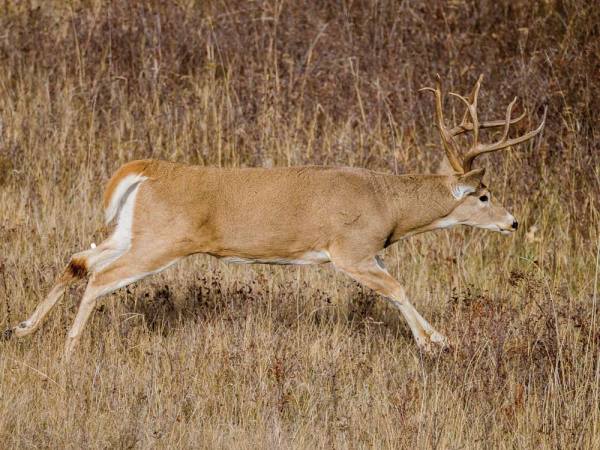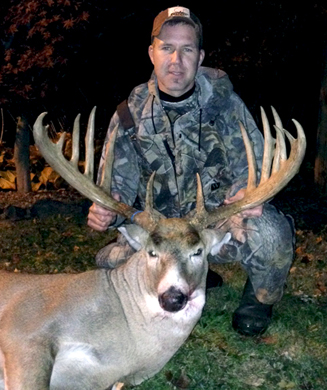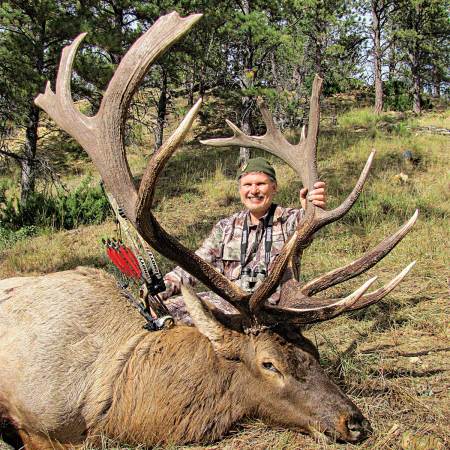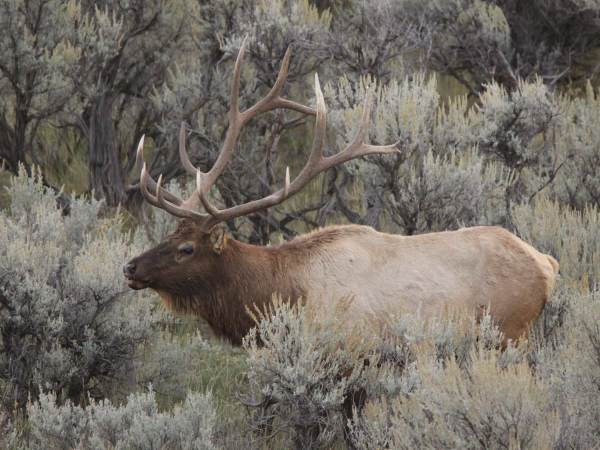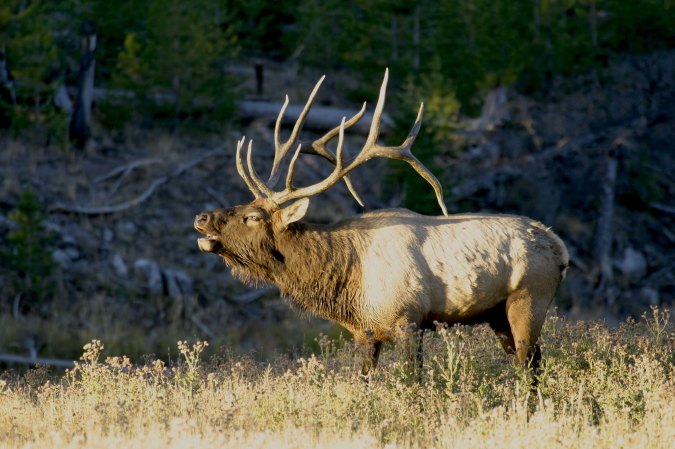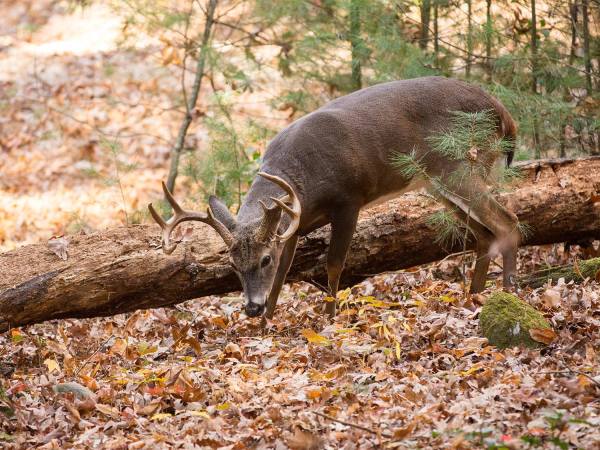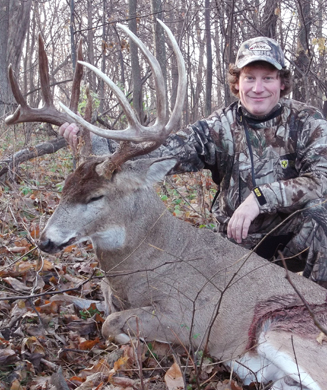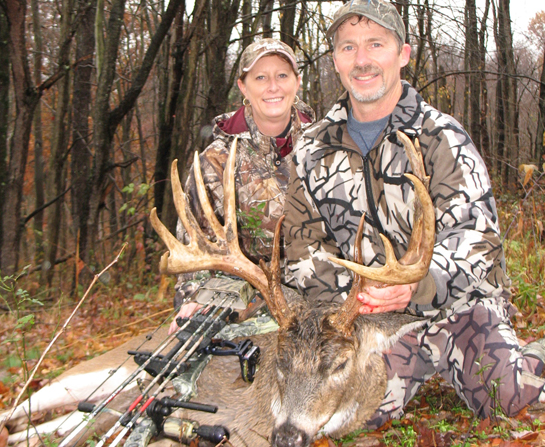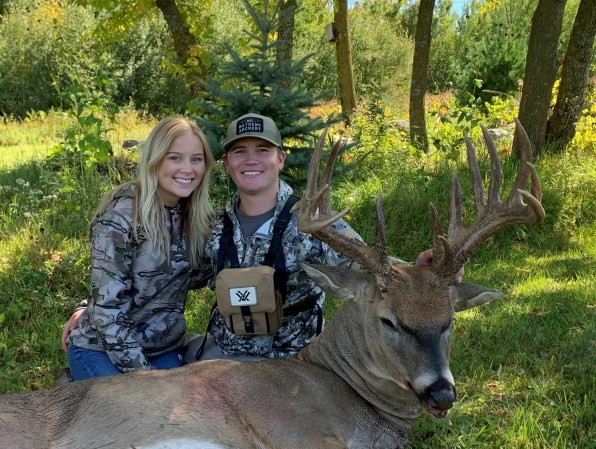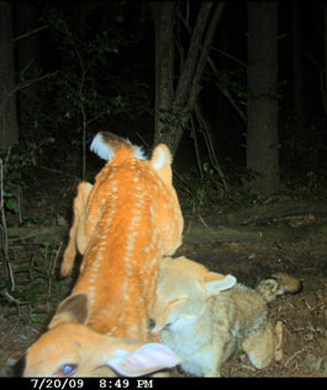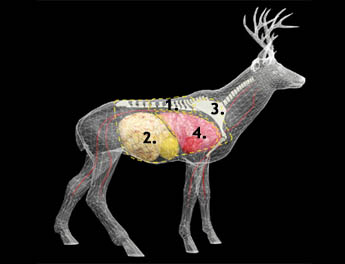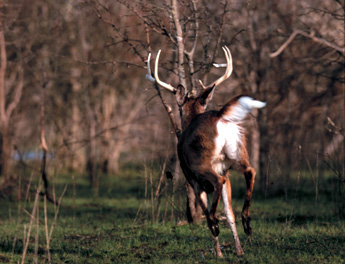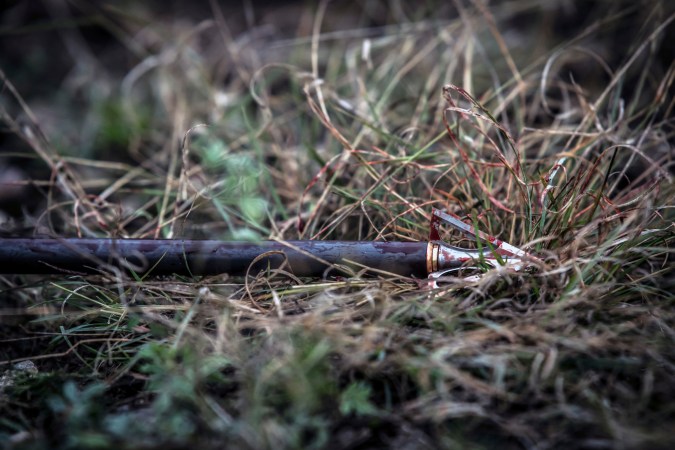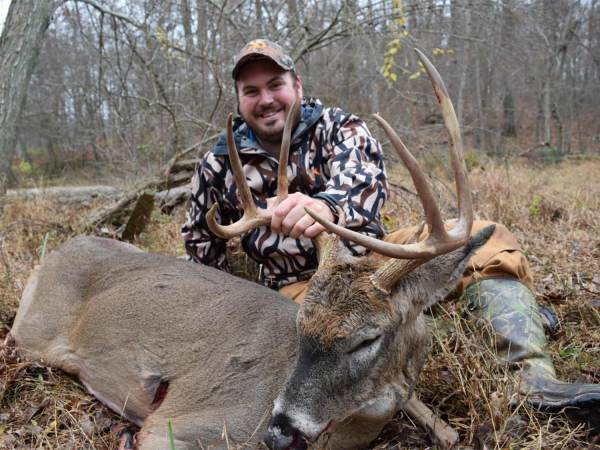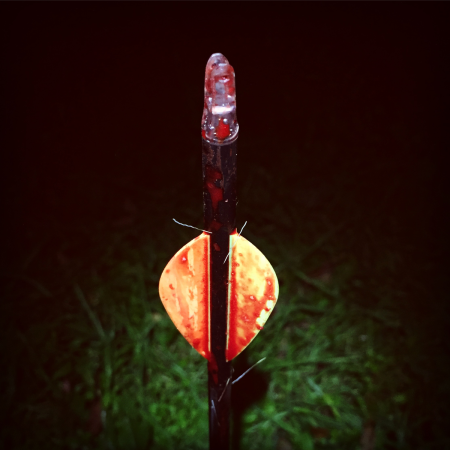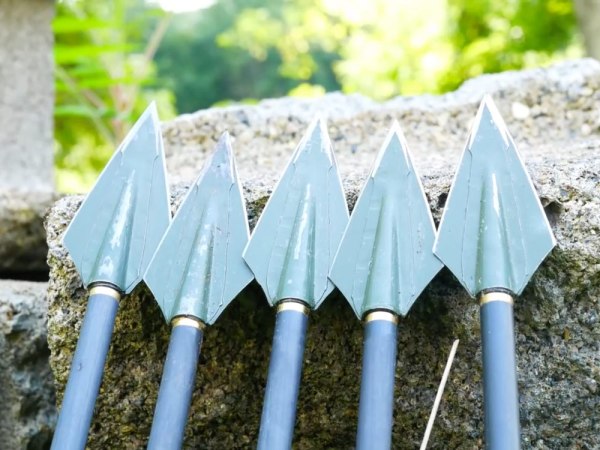Your goal is to zip an arrow through a buck’s lungs and possibly his heart, too. But let’s not duck reality here. Upon hearing the swish of even the quietest bowstring, many whitetails come unglued, dropping their bodies and whirling away in one spectacular motion. A perfectly aimed arrow might clip a tree limb and veer offline. Squinting through the peep at a behemoth’s rack, you might freak and yank your release’s trigger. All sorts of things can cause a “gimme” shot to go awry.
Sail an arrow cleanly over or under a deer and that’s okay. But strike a deer in any of the four anatomical zones we’ve outlined here and it’s your duty to work long and hard to recover that animal. Slack off in this area and you ought to have your archery license revoked. Here’s how to read the shot.
ZONE 1: NO MAN’S LAND
HIT: Many people aim too high on deer. I believe it’s because from a tree stand 18 to 20 feet in the air, a buck looks farther away than he really is. If you aim high and pull the shot a few inches high, your arrow will hit in “no man’s land.” Sometimes this works out and you break the spine or cut the main artery that runs down a deer’s back. More often you’ll miss those vitals and strike only soft tissue.
REACTION: If the arrow strikes a deer’s spine, the deer will hit the ground. On rare occasions it will thrash, recover and lunge off, so put another arrow into it if you can. If you miss the spine and aorta and hit only meat, the deer might run or simply jump and walk off.
CLUES: Your buck will drop on the spot if you got lucky and spined him. There will be plenty of bright blood and long brown back hair if your arrow severed an artery. If you find a shaft smeared only with fat and flesh, then you didn’t hit his vitals.
TRAIL POINTERS: A deer with a severed aorta will not go far, maybe as little as 60 yards; there will be a good amount of blood. Wait a half hour or so before trailing. Recovery will be 100 percent on spine and artery hits. When an arrow cuts flesh only, you’ll find a small to moderate amount of blood at the point of impact, and it will peter off down the trail. It makes no difference how long you wait to start trailing the deer–you won’t find that buck.
ZONE 2: TOO FAR BACK
HIT: If your arrow hits the very front of this zone it might clip the back of the lungs or hit the liver, especially if the deer is severely quartering away. A hit farther back will get only guts.
REACTION: Typically, a buck drops his hind end, bolts 75 yards or so and stops, sometimes humped in the middle. He will either lie down or walk off slowly. Generally, a paunch-shot deer will go no more than 200 to 250 yards before it beds for the first time.
CLUES: If your arrow got liver, you’ll find a lot of dark blood and brown hair on the ground. An arrow that passes through a paunch will stink and be covered with slimy green matter, brown or white belly hair and traces of watery blood. You’ll find stomach or intestinal contents and fragments in the hit area and along the escape path.
TRAIL POINTERS: A deer shot through the liver won’t go far. Wait two hours, follow the dark spoor and you’ll find your game. Don’t trail a deer hit in the paunch for at least 8 to 10 hours. It’s better to wait 12 hours to let an animal bed a few times, stiffen and finally expire.
ZONE 3: TOO MUCH SHOULDER
HIT: If you try to sneak an arrow too tight behind a buck’s front leg, you might plant it a few inches too far forward into his bony, meaty shoulder. To avoid this poor hit, aim a few inches behind the shoulder and shoot for the biggest part of the lungs. They extend almost halfway back on a whitetail.
REACTION: A buck will run off low in the front end and off to one side. He’ll appear ready to stumble any minute but will usually recover and keep going.
CLUES: A high shoulder hit often results in poor arrow penetration. A carbon arrow might fall out as a deer bolts (look for meat and brown hair on the broadhead and some blood on the bottom of the arrow). An aluminum shaft might snap off (look for the top of it within 100 yards of where the deer ran). Either way, there won’t be a lot of blood to begin with, and the trail will peter out quickly. Every now and then you’ll get lucky: The arrow will zip under the scapula and clip the front of the lungs. If you hit a deer low in the brisket you’ll find a lot of bright blood. Your arrow might have brown or white hair on it, along with meat and fat.
TRAIL POINTERS: If you hit low in this zone, wait at least an hour before looking. If you got lucky and cut major veins or an artery, you might find the buck quickly. But many deer survive flesh wounds. Wait a while longer before looking for a whitetail shot high in the shoulder. If your arrow penetrated enough to cut the front of the lungs, the buck will die. If it went in a few inches and backed out or broke off, you’re not going to find that deer. The good news is he will probably recover.
ZONE 4: BULL’S EYE!
HIT: Depending on whether a buck is broadside or quartering away, your arrow could pierce both lungs and maybe his heart, or just one lung and maybe the heart.
REACTION: A buck kicks his hind legs, takes off like a shot and runs until he dies.
CLUES: An arrow will often zip completely through an animal that is standing broadside. When you retrieve your arrow, it should be covered from broadhead to nock with bright blood with some bubbles. If the arrow is not red from end to end it might have clipped only one lung. Any hair found on the ground or the shaft will be brown. If, on a quartering-away deer, the arrow catches a lot of shoulder bone and muscle, it won’t penetrate fully. An aluminum shaft might snap as the animal bolts; look for part of it along the blood trail.
TRAIL POINTERS: A double-lunged buck is dead on his hooves. Check your arrow if you can find it, and then pick up the trail of red spray and go get him. But say you trail 100 yards and don’t find your game; stop and back out. Chances are your arrow cut and collapsed only one lung. Wait at least four hours or come back the next morning. You should recover your deer within 200 to 300 yards of where you stopped.

